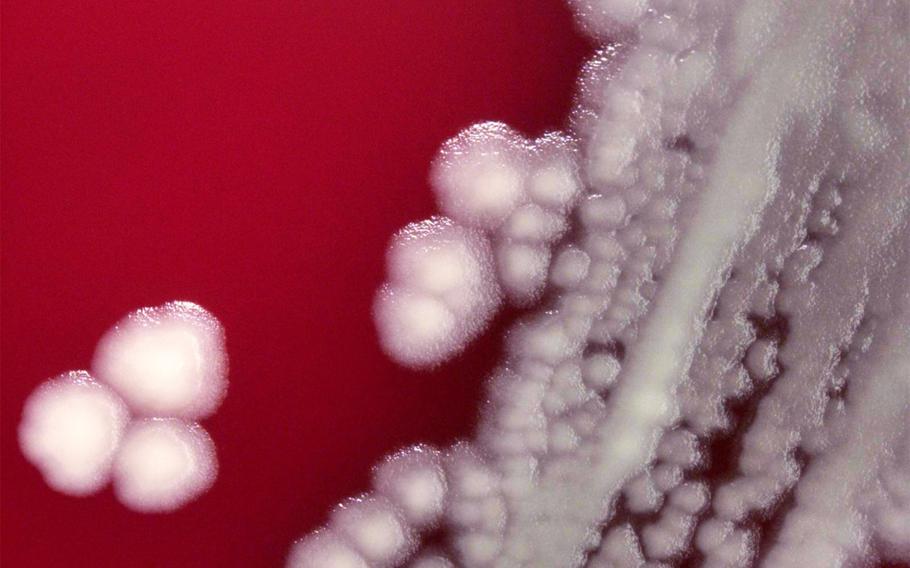
The bacterium bacillus anthracis under the low-power magnification of 10X of a digital Keyence scope. (Todd Parker/Courtesy of the CDC )
YOKOTA AIR BASE, Japan — The Pentagon confirmed Monday that it sent potentially live anthrax to Camp Zama — headquarters of U.S. Army Japan — despite earlier assurances that no bases outside of South Korea received shipments.
The Army base used anthrax in a biosecurity program from 2005 to 2010, but it has since been destroyed, Pentagon spokesman Col. Steve Warren said.
Zama joins Osan Air Base — where 22 personnel might have been exposed and are taking precautionary antibiotics — as the only two overseas bases confirmed to have received anthrax shipments.
Warren said the investigation continues into which labs received shipments of potentially live anthrax.
“If we have any updates, we will certainly share them as soon as possible,” he said.
The list of labs that may have received active spores has grown to include dozens of facilities in the U.S., Canada, Australia, the United Kingdom, South Korea and Japan.
On Monday, the Defense Department confirmed 69 labs around the world had received anthrax from the Army’s Dugway Proving Ground in Utah, where live spores were found in samples supposed to be inert.
The Defense Department is nearing the end of testing samples in 91 batches of anthrax — a major reduction in what was believed to be 400 suspect batches earlier this month, according to Warren.
So far, 11 batches have tested positive for live anthrax.
The Pentagon told Stars and Stripes earlier this month that no overseas bases other than Osan had received anthrax shipments over the past decade.
“Since I made that statement, we continued our investigation and our look into this process, and determined that we had in fact sent anthrax to Japan in 2005,” Warren said.
U.S. Army Japan spokesman Lt. Col. Kevin Toner confirmed Monday that anthrax was sent to Camp Zama in 2005 as part of a “training and proficiency testing program” developed to protect U.S. personnel and Japanese citizens from threats posed by biological agents, a Pentagon statement said.
The program, which Japanese reports said ran from 2005 to 2010, was discontinued, and the sample at Camp Zama was destroyed, Toner said.
“It is impossible to determine whether the sample sent to Camp Zama contained live [anthrax], as it was destroyed in 2009,” the Pentagon statement said.
An inventory of the Camp Zama laboratory conducted this month verified there were no live anthrax samples there, the statement said.
“There were no cases of infection related to the 2005 sample, and there is no health risk to the laboratory personnel or the general public in Japan, as it was properly transported and stored prior to destruction,” the statement said.
robson.seth@stripes.com Twitter: @sethrobson1